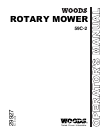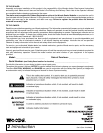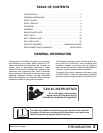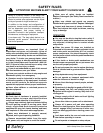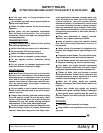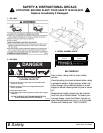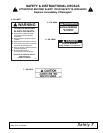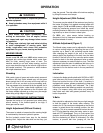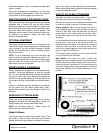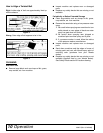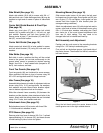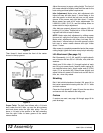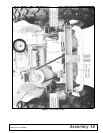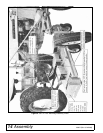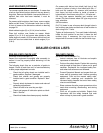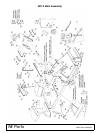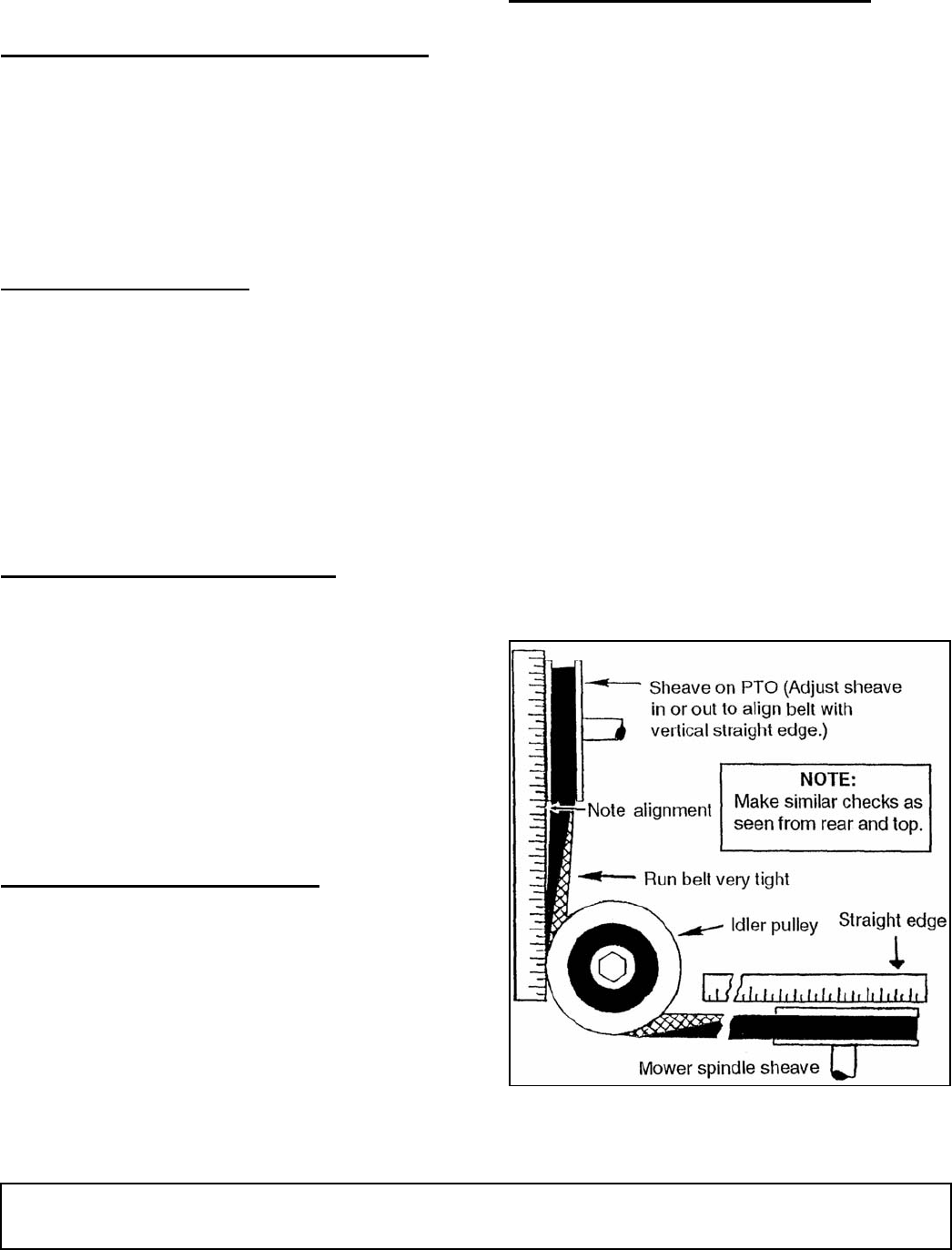
Operation 9
29927 (Rev. 3/14/2008)
should be adjusted so that it is snug but not tight when
mower is raised.
When belt replacement is necessary, use only belts
recommended by Woods dealers. These are of special
construction for shock loading and severe use.
SIDE DISCHARGE & DISCHARGE CHUTE
Both side shield and a discharge chute are provided for
discharge end of mower (left end on white mower
frames and right end on yellow frames). The side cover
shield should be used on light mowing and when mow-
ing areas where other persons may be present. The
discharge chute is used in heavy mowing to allow eas-
ier escape of cut material. Always use either side
shield or discharge chute.
OPTIONAL EQUIPMENT
Two caster wheels are available for mounting on the
front of the mower. These will gauge the mowing height
very accurately. The leaf mulcher disposes of leaves
quickly and economically. It returns valuable organic
material to the soil.
NOTE: To do a satisfactory job of leaf mulching, the
mower should be adjusted so blades are about 1-1/2"
above ground and the back of the mower slightly lower
than the front. The mower should be run at full RPM
with tractor in first or second gear.
MOWER SPINDLE ASSEMBLIES
Mower spindles are equipped with two tapered roller
bearings. The proper adjustment is held by a spring
pin. It is not intended that these bearings be adjusted
during their useful life. When difficulty is experienced
with the mower spindle assembly, time and trouble will
be saved by buying a completely new spindle assem-
bly.
However, if bearings must be adjusted, the spring pin
can be driven out, the sleeve pulled loose, and a
washer shim placed under the sleeve to tighten the
bearings.
SERVICING CUTTING BLADES
Blades are made of heat-treated alloy steel and are
designed to produce the most satisfactory results. For
a good mowing job, always keep blades sharp.
NOTE: On left hand models (L - White Frame) the
blade bolts have left-hand threads.
Model 59 Mower
(This mower does not have friction blade clutch.) The
bolt which is used to fasten the blade to the mower
spindle shaft has a nylon insert to prevent it from back-
ing out too easily. Do not substitute an ordinary bolt.
When replacing the blade, tighten the bolt tight enough
so that the blade will not slip.
HOW TO SOLVE BELT PROBLEMS
Assemble as shown on mower decal. If not installed
correctly, more twist will result than is allowable.
Belt whip is caused by belt misalignment unless mower
is driven by a rough-running or 2-cylinder engine.
Proper position: Adjust mower forward and back to
such a position that the rear take-up idlers are near the
bottom of their slots when the belt lines up with the
proper groove in the center pulley and is tight. Never
run the idlers high in the slots as this will cause mis-
alignment.
It is assumed that the mower is adjusted to run approx-
imately level. If the front of the mower is down, the
idlers will have to be raised. If the back of the mower is
down, the idlers will have to be down further. Belts
must be in proper alignment with sheave grooves as
shown in Figure 2 and Figure 3.
PTO pulleys must be moved in or out to cause the belt
to be in alignment with the idlers.
Belt Tension: Run belts very tight. Present belt
designs are much stronger than we are accustomed to
and will stand more tension. Slipping will heat and ruin
a belt but tension is not harmful. You can minimize the
amount of change in belt length as mower is raised and
lowered by keeping the rear idlers adjusted to a low
position.
Figure 1. Use of Straight Edge (Side View)



